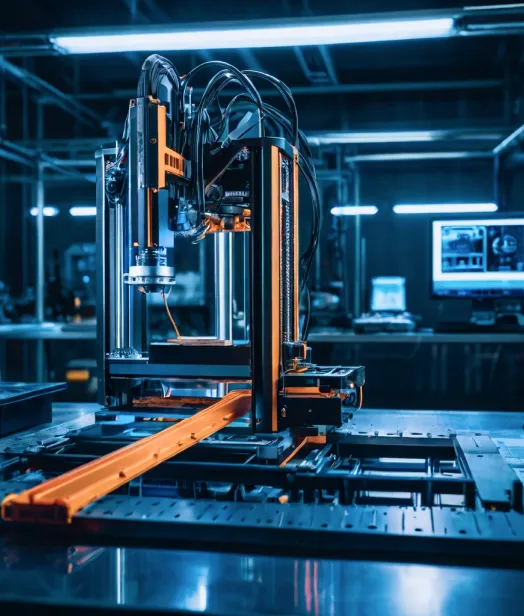

In the ever-evolving world of manufacturing, 3D printing has emerged as a transformative technology that offers unprecedented flexibility, precision, and innovation. Known as additive manufacturing, 3D printing allows for the creation of complex, highly detailed objects directly from digital files. This technology has become a cornerstone of modern production, enabling industries to prototype quickly, customise products, and even produce end-use parts with remarkable efficiency.
For businesses and manufacturers looking to gain a competitive edge, integrating 3D printing into their operations is no longer just an option—it’s a necessity. This page will explore the various aspects of 3D printing, from its benefits and applications to the materials and technologies involved and explain why our CNC machining and 3D printing services are the ideal choice for your manufacturing needs.
3D printing has brought a new level of precision to manufacturing, revolutionising traditional processes and enabling rapid prototyping with high accuracy. From a simple 3D printing prototype to complex designs, this technology allows manufacturers to create detailed parts quickly, bringing ideas to life in a matter of days. By using cutting-edge SolidWorks software, engineers can design every aspect with a focus on quality and function, making the upload and production processes as streamlined as possible.
3D printing has brought about a paradigm shift in how products are designed, developed, and manufactured. The technology's ability to create objects layer by layer, directly from a digital model, has unlocked numerous advantages for manufacturers across a wide range of industries. With advancements from companies like Microsoft, 3D printers are becoming more powerful and versatile, used across various applications, including house and industrial manufacture. From initial prototype to final product, 3D printing technology offers flexibility for customisation and speed, reducing turnaround days and costs.
One of the most significant benefits of 3D printing is the ability to create complex geometries that would be impossible or highly impractical with traditional manufacturing methods. Whether it’s intricate lattice structures, organic shapes, or internal features that can’t be machined, 3D printing allows for designs limited only by the imagination. This design freedom enables innovation in product development and opens up new possibilities for engineers and designers.
The ability to easily customise products is one of the most compelling advantages of 3D printing. Because each item is produced directly from a digital file, it’s easy to make adjustments and produce custom parts tailored to specific needs or individual customers. This flexibility is invaluable in industries such as healthcare, where custom implants, prosthetics, and dental devices are often required.
With 3D printing, there’s no need to maintain large inventories of parts. Products can be manufactured on-demand, reducing storage costs and minimising the risk of excess inventory. This capability is particularly useful in industries with high variability in demand or for businesses that operate with just-in-time production models.
The distributed nature of 3D printing allows manufacturers to produce parts closer to their point of use, reducing dependence on global supply chains and mitigating the risk of disruptions. This capability enhances supply chain resilience and provides greater flexibility in managing production.
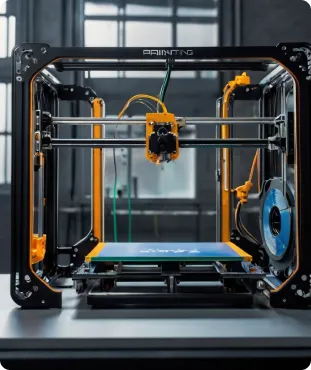
Speed is a critical factor in today’s fast-paced market, and 3D printing excels in providing rapid prototyping capabilities. With the ability to quickly produce physical models directly from digital designs, businesses can test and iterate on their concepts much faster than ever before. This acceleration from concept to prototype reduces time-to-market and allows companies to stay ahead of the competition.
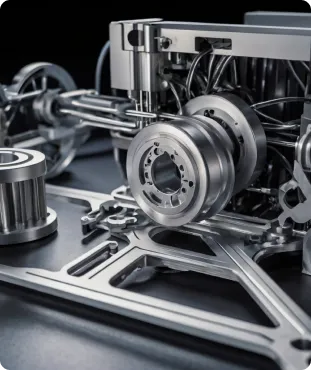
Traditional manufacturing methods often involve lengthy lead times, especially when custom tooling or molds are required. 3D printing bypasses these steps, allowing for significantly shorter lead times. This speed enables businesses to respond quickly to market demands and reduces the time required to fulfill orders.
Traditional manufacturing processes, such as injection molding, require expensive tooling and molds, making them cost-prohibitive for low-volume production runs. 3D printing eliminates the need for these tools, allowing for the economical production of small batches or even single items. This capability is particularly beneficial for customised products, niche markets, or products with limited production runs.
3D printing is inherently more material-efficient than traditional subtractive manufacturing processes. Because it builds objects layer by layer, only the material necessary to create the part is used, resulting in minimal waste. This efficiency not only reduces material costs but also supports sustainability efforts by minimising waste and conserving resources.
In many cases, 3D printing can combine multiple components into a single printed part, reducing the need for complex assemblies. This simplification can lead to fewer parts, reduced assembly time, and lower labor costs, all while maintaining or even improving the functionality of the product.
3D printing fosters innovation by enabling the creation of prototypes and end-use parts that were previously impossible. This technology empowers engineers and designers to experiment with new ideas, test new materials, and push the boundaries of what’s possible in product development.
The versatility of 3D printing makes it applicable across a wide range of industries, each of which benefits from the technology’s unique advantages.
In the aerospace industry, 3D printing is used to produce lightweight, high-strength components that reduce the weight of aircraft and spacecraft. This weight reduction leads to improved fuel efficiency and performance. 3D printing also allows for the creation of complex geometries that are critical for optimising airflow and thermal management in aerospace applications.
In the consumer goods industry, 3D printing is used to create prototypes, customised products, and even final goods. This capability allows companies to respond quickly to market trends, offering personalised products that meet the specific needs and preferences of individual customers. From fashion accessories to home decor, 3D printing enables a new level of product personalization.
The energy industry uses 3D printing to produce components for wind turbines, oil and gas equipment, and other energy-related applications. 3D printing allows for the production of parts with optimised geometries that improve efficiency and reduce energy consumption. This technology also enables the creation of custom components for specific energy systems, enhancing their performance and reliability.
The food industry is exploring the use of 3D printing to create custom shapes and textures for food products. This technology allows chefs and food manufacturers to experiment with new culinary creations, offering unique dining experiences. 3D printing is also being used to produce custom molds and tools for food production, enabling greater creativity in food presentation.
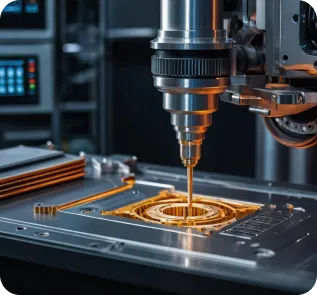
The automotive industry uses 3D printing for rapid prototyping, custom parts, and even the production of end-use components. This technology enables automakers to iterate quickly on design concepts, reducing development time and bringing new vehicles to market faster. Additionally, 3D printing is used to create lightweight parts that improve fuel efficiency and reduce emissions.
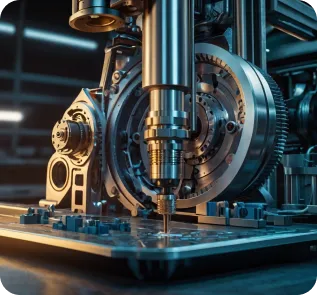
3D printing is increasingly being used in education and research to create models, prototypes, and experimental setups. This technology provides students and researchers with hands-on experience in designing and manufacturing complex objects, fostering innovation and creativity. In research, 3D printing enables the rapid production of custom laboratory equipment and experimental apparatus, accelerating scientific discovery.
Healthcare is one of the most rapidly growing sectors for 3D printing, with applications ranging from custom implants and prosthetics to surgical instruments and dental devices. The ability to create patient-specific devices ensures a perfect fit and improves patient outcomes. 3D printing is also being used in bioprinting, where living cells are printed to create tissues and organs for research and potential future transplantation.
Architects and construction companies are using 3D printing to create detailed models, custom building components, and even entire structures. The ability to print complex geometries and large-scale objects directly from digital designs offers new possibilities in building design and construction. 3D printing is also being explored as a solution for affordable housing and disaster relief, where structures can be printed quickly and cost-effectively.
The jewelry and fashion industries are embracing 3D printing for its ability to produce intricate designs and custom pieces with a high level of detail. Designers can create one-of-a-kind items tailored to individual customers, offering a new level of personalisation. 3D printing also allows for the production of complex patterns and textures that would be difficult or impossible to achieve with traditional methods.
Beyond healthcare devices, 3D printing is making significant strides in medical research, particularly in the field of bioprinting. Researchers are using 3D printing to create tissues, organs, and even drug testing models. This technology holds the potential to revolutionise medicine by enabling the production of custom tissues for transplantation and personalised drug therapies.
3D printing is a highly versatile technology, with a wide range of materials and processes available to meet the specific needs of different applications.
The choice of material is crucial in 3D printing, as it determines the properties and performance of the final product.
Ceramic Materials: Used for parts with high heat resistance, chemical stability, and biocompatibility, often used in medical and industrial applications.
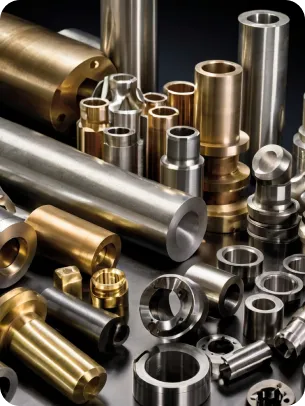
Carbon Fiber-Reinforced Polymers: Combining the strength of carbon fiber with the versatility of plastic, these materials are used in high-performance applications like aerospace and sporting goods.
Different 3D printing technologies are available to suit various applications, each offering unique benefits.
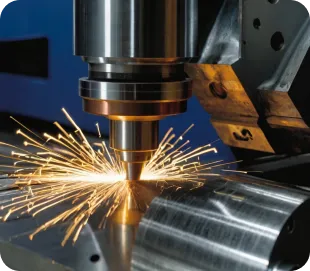
How it Works: SLS uses a laser to sinter powdered material, typically nylon, into solid parts, allowing for complex geometries without the need for support structures. Applications: SLS is used for functional prototypes, end-use parts, and complex geometries in aerospace, automotive, and consumer goods.
With years of experience in CNC machining and 3D printing, our team has the expertise to bring your ideas to life with precision and quality. We understand the unique challenges of each project and work closely with our clients to ensure that every detail is perfect.
We invest in the latest 3D printing technologies and materials to provide our clients with the best possible results. Our state-of-the-art equipment allows us to produce parts with exceptional accuracy, detail, and consistency.
Every project is unique, and we offer tailored solutions to meet your specific needs. Whether you need a single prototype, a small production run, or large-scale manufacturing, we have the flexibility to deliver.
We understand the importance of speed in today’s market, and our efficient processes ensure quick turnaround times without compromising quality. We work diligently to meet your deadlines and keep your project on track.
We offer competitive pricing on all our 3D printing and CNC services, ensuring you get the best value for your investment. Our cost-effective solutions make high-quality manufacturing accessible to businesses of all sizes.
Quality is at the heart of everything we do. We adhere to strict quality control standards to ensure that every part we produce meets the highest specifications. Our commitment to excellence is reflected in the satisfaction of our clients.
Malcolm Nicholls has been a prominent figure in the 3D printing industry, known for his innovative approach to prototyping and design. With over two decades of experience, he has played a crucial role in advancing the capabilities of 3D printing technology.
Malcolm Nicholls (MNL) stands out for its expertise in casting, 3D printing service, and production support. With industry-leading 3D printer, they provide both short-run and series manufacturing solutions. Their in- house team uses SolidWorks and other design tools to create high-quality prototypes for clients, ensuring each 3D print meets industry standards.
At CNC Precision Engineering, we are inspired by Nicholls' commitment to precision and quality. By integrating his insights into our own practices, we leverage advanced 3D printing techniques to enhance our CNC machining services. This synergy allows us to offer our clients tailored solutions that cater to diverse industries, including aerospace, automotive, and healthcare. By embracing innovative prototyping methods, CNC Precision Engineering remains at the forefront of manufacturing, ensuring that we deliver exceptional quality and efficiency in every project.
3D printing is more than just a manufacturing method; it’s a tool for innovation, creativity, and efficiency. By harnessing the power of 3D printing, businesses can stay ahead of the competition, reduce costs, and bring new products to market faster. Whether you’re looking to prototype a new design, customise a product, or streamline your production process, At CNC Precision Engineering, our CNC machining and 3D printing services offer the expertise and technology you need to succeed.
Contact us today to learn more about our services, request a custom quote or find out how 3D printing prototypes and printers can enhance your production process.